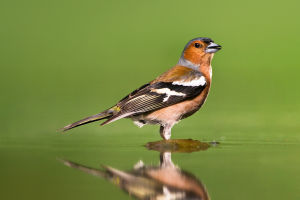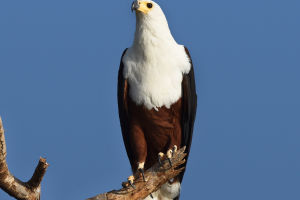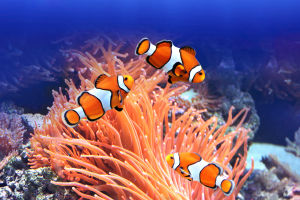Welcome, Lykkers! Have you ever wondered about the incredible creatures that roam our oceans? Today, let’s dive into the world of sea turtles. These majestic animals have been around for millions of years, evolving through history to become the incredible species we know today.
From their unique physical traits to their migratory habits, sea turtles are some of the most fascinating creatures in the animal kingdom. In this article, we’ll explore the seven existing species of sea turtles, their distinct features, and where they can be found.
What Are Sea Turtles?
Sea turtles are marine reptiles that belong to the order Testudines. They are the only type of turtle that spends its life in the ocean. Unlike their land-dwelling cousins, sea turtles are perfectly adapted to life in water. They have streamlined, flat shells that help them glide through the sea effortlessly. Their front flippers are paddle-shaped, allowing them to swim gracefully, while their back flippers act like rudders, helping them navigate with precision.
These turtles are scattered across the globe, living in tropical and temperate seas. They return to land only to lay their eggs, often traveling long distances to reach the same beach where they were born. These creatures are incredibly resilient, surviving through drastic changes over millions of years.
The Seven Species of Sea Turtles
There are seven distinct species of sea turtles, each with its own unique characteristics. Let’s take a closer look at each one:
1. Leatherback Sea Turtle (Dermochelys coriacea)
The leatherback is the largest of all sea turtles. It can weigh up to 500 kilograms and reach lengths of 2 meters. Unlike other turtles, its shell is not hard and bony but soft and leathery, hence its name. Leatherbacks primarily feed on jellyfish, and their migratory paths span vast distances across the oceans. They are often found in cold waters, unlike other sea turtle species that prefer warmer climates.
2. Loggerhead Sea Turtle (Caretta caretta)
The loggerhead is known for its large, round head and strong jaws, which it uses to feed on hard-shelled prey like lobsters and mollusks. These turtles can weigh up to 200 kilograms and have an oval-shaped shell that ranges in color from brown to reddish-brown. Loggerheads are found in temperate and tropical regions and are known for their long migrations.
3. Kemp’s Ridley Sea Turtle (Lepidochelys kempii)
Kemp’s Ridley is the smallest of the sea turtle species. It typically weighs about 45 kilograms and has an almost circular, olive-green shell. This species is critically endangered, with a significant portion of its population nesting along the coasts of Mexico. Kemp’s Ridley turtles are known for their unique mass nesting behavior, where hundreds of turtles gather to lay eggs at the same time.
4. Olive Ridley Sea Turtle (Lepidochelys olivacea)
The olive ridley is similar in size to the Kemp’s Ridley but slightly more widespread. It has a more oval-shaped shell, which is dark gray or olive in color. These turtles primarily feed on crustaceans and mollusks. Like the Kemp’s Ridley, olive ridleys are known for their arribada, a mass nesting event where many females come ashore to lay eggs at the same time.
5. Hawksbill Sea Turtle (Eretmochelys imbricata)
Hawksbills are known for their beautiful, overlapping shell scutes, which are often golden or reddish in color. Their beak-like mouth, which resembles that of a hawk, allows them to feed on sponges and coral. These turtles are often found in tropical coral reefs and are critically endangered due to the illegal trade of their shells.
6. Green Sea Turtle (Chelonia mydas)
The green sea turtle is one of the most recognizable species, with its large, heart-shaped shell that ranges from olive-brown to dark green. They are primarily herbivores, feeding mainly on seagrasses and algae. These turtles are found in tropical and subtropical oceans worldwide and are one of the few sea turtles that return to the same beaches to lay eggs.
7. Flatback Sea Turtle (Natator depressus)
The flatback sea turtle is unique to the waters around Australia. It has a flattened, grayish-green shell with a soft, waxy layer. Adult flatbacks typically weigh around 90 kilograms, and their diet consists mainly of soft-bodied invertebrates, such as jellyfish and sea cucumbers. Unlike other sea turtles, flatbacks do not migrate long distances and are mostly found in coastal areas.
Protecting the Wonders of the Ocean
Sea turtles are truly remarkable creatures, and they play a crucial role in keeping our marine ecosystems healthy. Unfortunately, many species face grave dangers due to human activities, including habitat loss, pollution, and illegal hunting. To ensure these amazing creatures continue to thrive, conservation efforts are vital. So, the next time you encounter a sea turtle or learn about its habitat, remember the long evolutionary journey that has shaped these fascinating animals.
Thank you for exploring the world of sea turtles with us, Lykkers! We hope this article has fueled your interest and admiration for these majestic animals. Stay tuned for more captivating stories about wildlife and ways we can contribute to protecting the planet’s diverse ecosystems.


